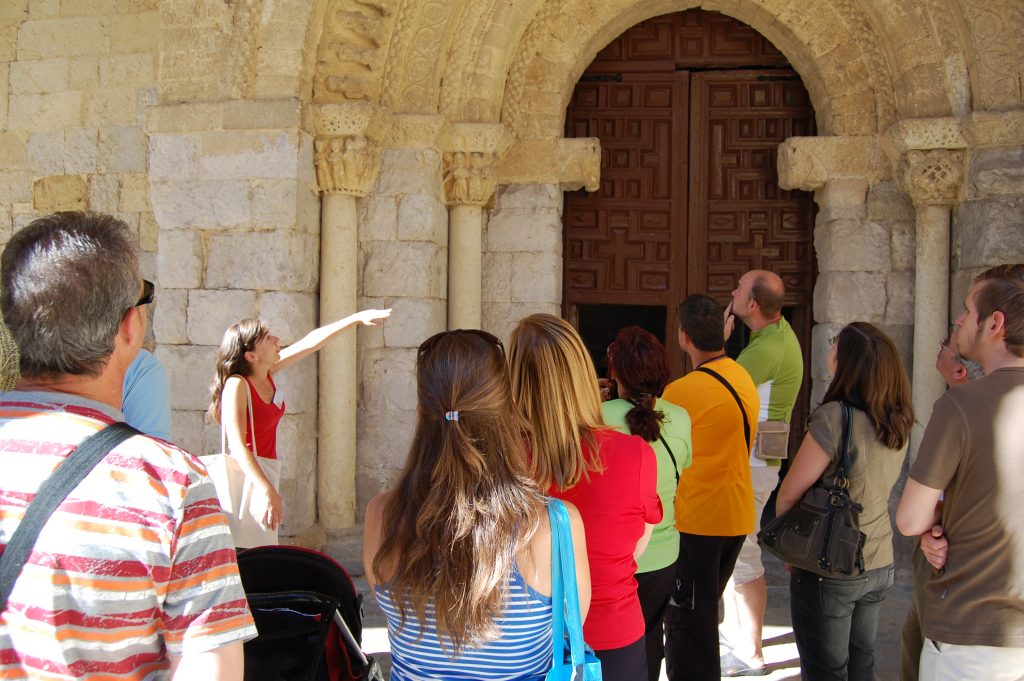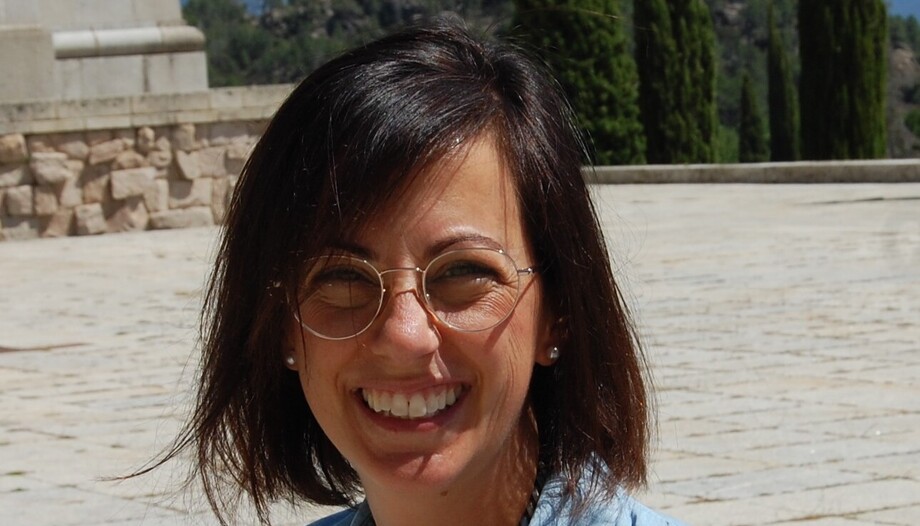Isabel Fernández Abad is an art historian. Her professional life and training have been between cultural management and teaching. She is currently president of Narthexan association that "develops initiatives aimed at deepening the authentic meaning of Christian art, discovering to the public its artistic entity and its theological and devotional value". She is also a high school teacher and mother of 5 children.
How and why was Nártex born?
-Nartex was born from the concern shared with some of our fellow students to tell everything that is really behind a work of art with a religious theme, everything that usually disappears among dates, techniques, curiosities and other historical data that, while still important, hide the true message and purpose of the work. Those of us who today make up the management team were providentially coinciding in different environments and little by little we were working and expanding the different areas covered by our association today.
The first of all, and the one that defines the identity of Nartex, was the area of summer projects: these are small communities of volunteer guides who, during the summer, make themselves available to visitors in various churches to offer a lively Christian welcome and a guided tour based on faith. These projects are now being carried out all over Europe and are organized within the framework of the European federation Ars et Fides and the A.R.C. youth associations, among which we are.
Increasingly, the lack of training in the humanities means that many people visit temples and "do not understand" what they see. How can we recover the catechetical sense of art?
-It is true that the lack of knowledge of our faith and all that surrounds it is increasing, not only when we talk about Sacred History, but also when we ignore all the vicissitudes of history in which faith has played an essential and defining role. But while this could be a handicap, in reality it only makes what we offer from Nártex more interesting and surprising, an authentic approach to faith lived through one of the most beautiful manifestations of it: art.
At the same time, with this scenario, does it make more sense than ever to promote the "via pulchritudinis"?
-It is true that today more than ever man has become immune to the ugly, the grotesque, the absurd, it seems that since childhood he has been trained for it. But it is also true that, in the depths of his heart, even he who has taken the most crooked path, recognizes the beauty and the truth of the things of God, of creation itself, and feels relief and enjoys the reality of the beauty of a church, a cathedral or contemplating a work of art in the Prado Museum. It is not that it makes sense to promote this way, but that "it is the way". The same one that the Lord uses to make his way into our hearts.
What differentiates a Nartex guide from a regular tour guide? How are Nartex guides trained?
-A Narthex guide is one who not only has the appropriate historical-artistic knowledge of the place or the work he is explaining, but who has been able to transcend its meaning, to deepen and make it his own to the point of living his faith in it, through it, and thus illuminates his discourse. I am sure that many tour guides with faith also do this.
From Nártex we study and provide the appropriate tools to reach this deep understanding: the symbolic meaning of the temple, the liturgy as an organizing element, prayer through art... These are some of the topics in which we train our guides and volunteers so that, in front of any space or work, regardless of its style or time, they are able to reach that deep meaning, that experience of which we speak, and transmit it. It is not a matter of catechizing, it is simply a matter of enlightening, the rest is in His hands.
What are the keys to your way of bringing art closer to people?
-I would say that welcome, knowledge and a deep personal and testimonial component is the most characteristic of our guides and volunteers. We usually work on itineraries and discourses that try to approach the work as simply as they are true, and help the visitor to make a personal journey through the monument. We want it to be more than just a bunch of information that is given to them and that they receive passively, we want it to be something that they can take with them into their own lives.
During the year, you do a lot of activities, how are they developed and how are they financed?
In Nártex throughout the year you can participate in conferences, guided tours, excursions, hours of art and prayer, almost free of charge. We are financed by donations and membership fees. We also receive occasional requests to attend groups and to organize specific visits, which leave us a small profit. Nártex is a non-profit civil cultural association that does not depend on any specific reality or movement. Our funding is scarce, but that has never been an obstacle to continue our work.
In summer, it is not uncommon to find Narthex volunteers in the main European cathedrals and temples. What is the feedback of these activities?
-As we said at the beginning, this is one of the most attractive projects of the association, every year we send volunteers to more than 30 European churches and cathedrals, among which we can find St. Mark's in Venice, Notre Dame de Paris, Bourges Cathedral, Bourdeaux... and so many others. The experiences are often unforgettable for them: friendship, faith, culture, personal and professional experience for some... We love to hear them talk about their destinations when they return and all the anecdotes they tell about how the tourists receive the service or how their life in community has been during those days.


It is true that the personal component and the speech is essential, but the mere fact of being on a trip to Münster, Germany, for example, and finding a Spaniard at the door of the cathedral who welcomes you like at home is simply wonderful and very well received by the visitors, who leave precious observations and testimonials in our visit notebooks. Even when there have been difficulties in the projects or things have not gone as well as expected, the volunteers bring back a positive balance of the experience.












